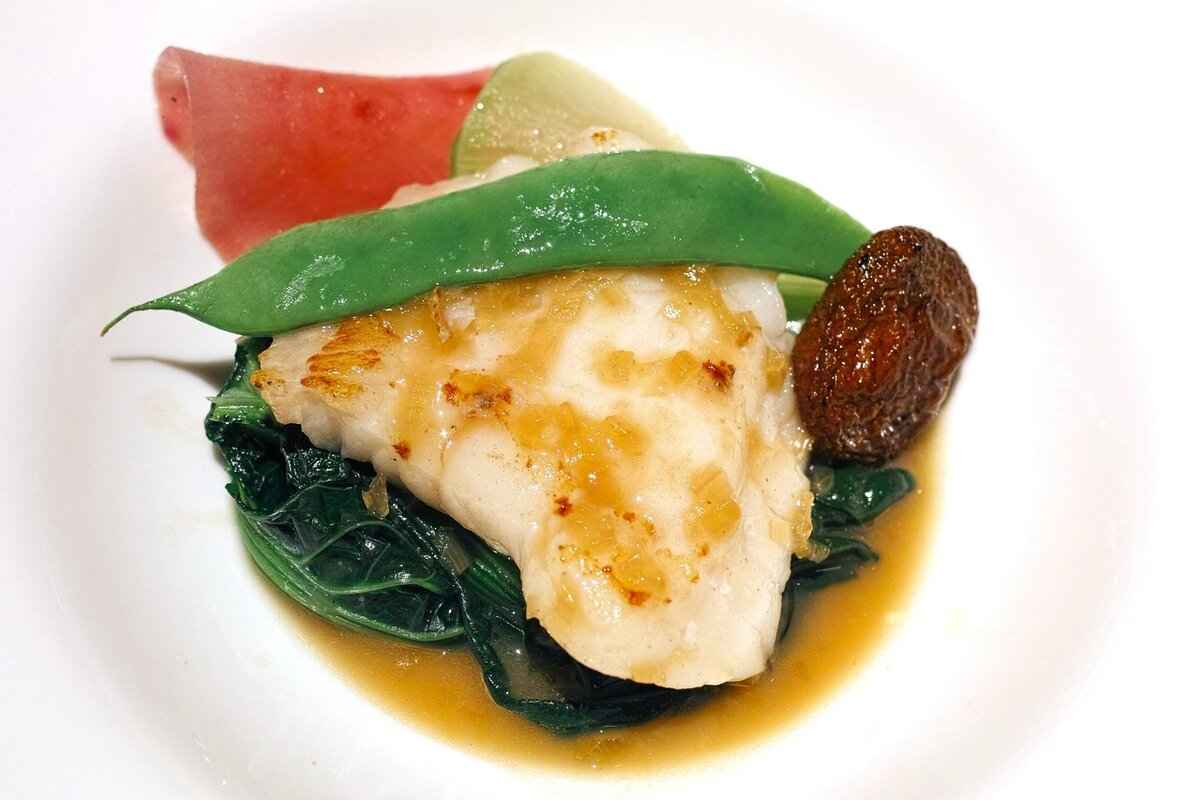This article delves into an array of low-calorie Asian dishes that not only promote a healthy lifestyle but also tantalize your taste buds. With a focus on nutritious ingredients and satisfying flavors, these dishes can easily become staples in your diet.
Incorporating low-calorie Asian dishes into your meals can lead to numerous health benefits. These dishes often emphasize fresh vegetables, lean proteins, and whole grains, making them ideal for weight management and improved overall nutrition. By choosing lighter options, you can enjoy satisfying meals without the guilt of excessive calorie intake.
Understanding the ingredients commonly used in low-calorie Asian cooking can enhance your culinary experience. Many of these ingredients not only add flavor but also contribute essential nutrients.
- Vegetables: A variety of vegetables, particularly leafy greens and cruciferous options, are staples in Asian cuisine.
- Legumes: Beans and lentils provide protein and fiber while keeping calories low.
- Whole Grains: Brown rice and quinoa are healthier alternatives to white rice.
This section highlights some easy-to-make low-calorie Asian recipes that are both flavorful and nutritious.
Stir-frying is a quick cooking method that retains nutrients. Consider dishes like chicken and vegetable stir-fry, which combines lean chicken breast with a colorful mix of bell peppers, broccoli, and carrots, all sautéed in a minimal amount of oil.
Asian salads can be both light and satisfying. Try a Thai cucumber salad that pairs fresh cucumbers with a tangy dressing made from lime juice, fish sauce, and a hint of sweetness from honey.
Transform traditional Asian dishes into healthier options with a few practical tips.
One effective method to cut back on calories is by reducing the amount of oil and sugar used in recipes. For example, use low-sodium soy sauce instead of regular soy sauce to lower sodium content while still enjoying rich flavors.
Understanding portion sizes is crucial for maintaining a balanced diet. Serve dishes in smaller bowls to help control portions, and complement meals with a side of steamed vegetables or a light broth-based soup.
Finding low-calorie Asian dishes is easier than ever with the rise of health-conscious dining options.
Many restaurants now focus on healthy Asian cuisine, offering dishes that prioritize fresh ingredients and lower calorie counts. Look for establishments that feature a menu rich in vegetables and lean proteins.
Numerous online platforms and blogs specialize in low-calorie Asian cooking. Websites like Asian Food Network and Minimalist Baker provide a wealth of recipes that cater to health-conscious eaters.
In conclusion, embracing low-calorie Asian dishes can significantly enhance your diet while providing delicious and satisfying meal options. With the right ingredients and cooking techniques, you can enjoy the rich flavors of Asian cuisine without compromising your health goals.
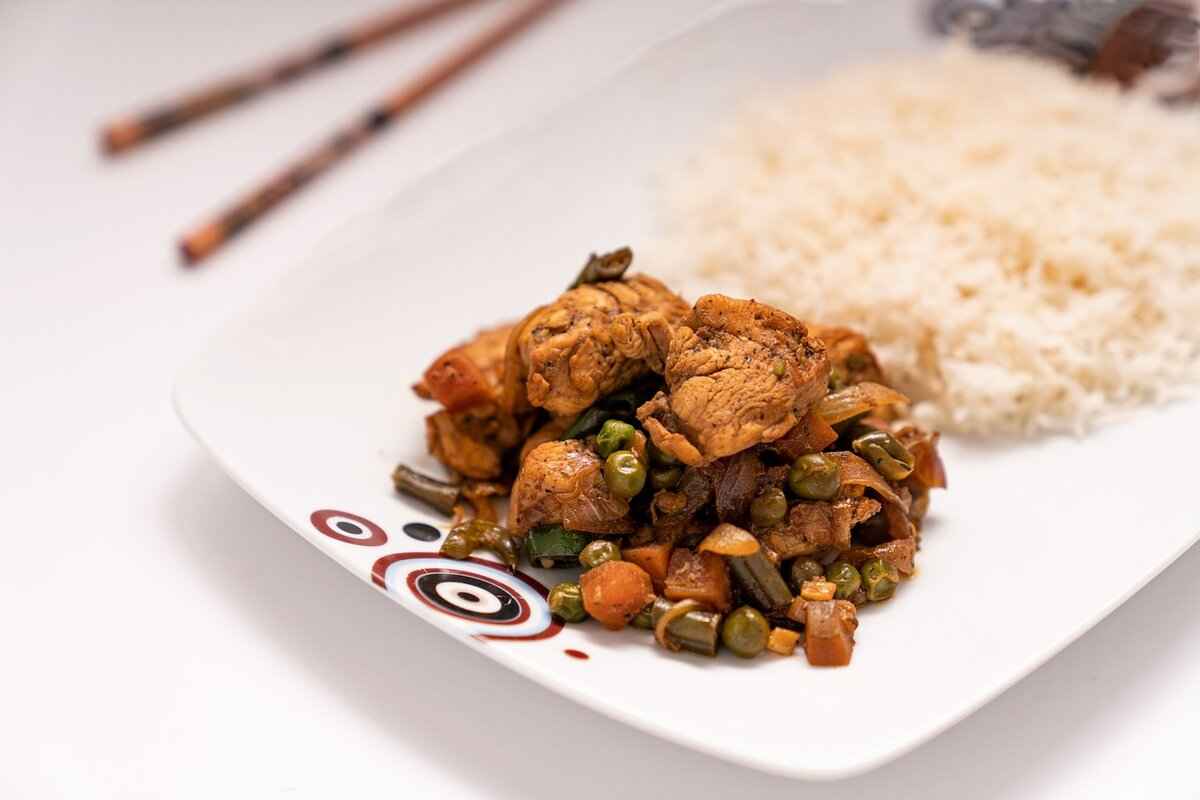
What Are the Benefits of Low-Calorie Asian Dishes?
In today’s fast-paced world, maintaining a healthy lifestyle can be challenging. However, incorporating low-calorie Asian dishes into your diet offers a delicious and nutritious solution. These dishes not only help in weight management but also provide a plethora of health benefits that can enhance your overall well-being.
Low-calorie Asian dishes are often rich in essential nutrients while being low in calories, making them an excellent choice for those looking to improve their diet. Here are some of the key benefits:
- Weight Management: By choosing low-calorie options, you can enjoy larger portions without exceeding your daily caloric intake. This is particularly beneficial for those aiming to lose or maintain weight.
- Improved Nutrition: Many Asian dishes are packed with vegetables, lean proteins, and whole grains, providing a balanced array of vitamins and minerals essential for good health.
- Heart Health: Low-calorie Asian recipes often use heart-healthy ingredients like fish, tofu, and a variety of vegetables, which can contribute to better cardiovascular health.
- Digestive Health: The high fiber content found in vegetables and whole grains aids digestion and promotes gut health, making low-calorie Asian dishes a smart choice for digestive wellness.
- Variety and Flavor: Asian cuisine is known for its diverse flavors and ingredients. Incorporating low-calorie dishes can introduce new tastes and textures to your meals, keeping your diet exciting and enjoyable.
Furthermore, many low-calorie Asian dishes are quick and easy to prepare, making them perfect for busy lifestyles. With a focus on fresh ingredients and simple cooking techniques, you can whip up a satisfying meal in no time.
Additionally, these dishes often utilize herbs and spices that not only enhance flavor but also offer various health benefits. For example, ginger and garlic are commonly used in Asian cooking and are known for their anti-inflammatory properties.
Incorporating low-calorie Asian dishes into your diet can also promote a mindful eating approach. By savoring each bite and enjoying the vibrant colors and flavors, you can cultivate a deeper appreciation for your meals while being conscious of your health.
As you explore the benefits of low-calorie Asian cuisine, consider trying a variety of dishes that feature ingredients like bok choy, broccoli, and quinoa. These ingredients not only provide essential nutrients but also contribute to a satisfying and balanced meal.
In summary, the incorporation of low-calorie Asian dishes into your diet can significantly enhance your health and well-being. From weight management to improved nutrition, the benefits are numerous and deliciously rewarding.
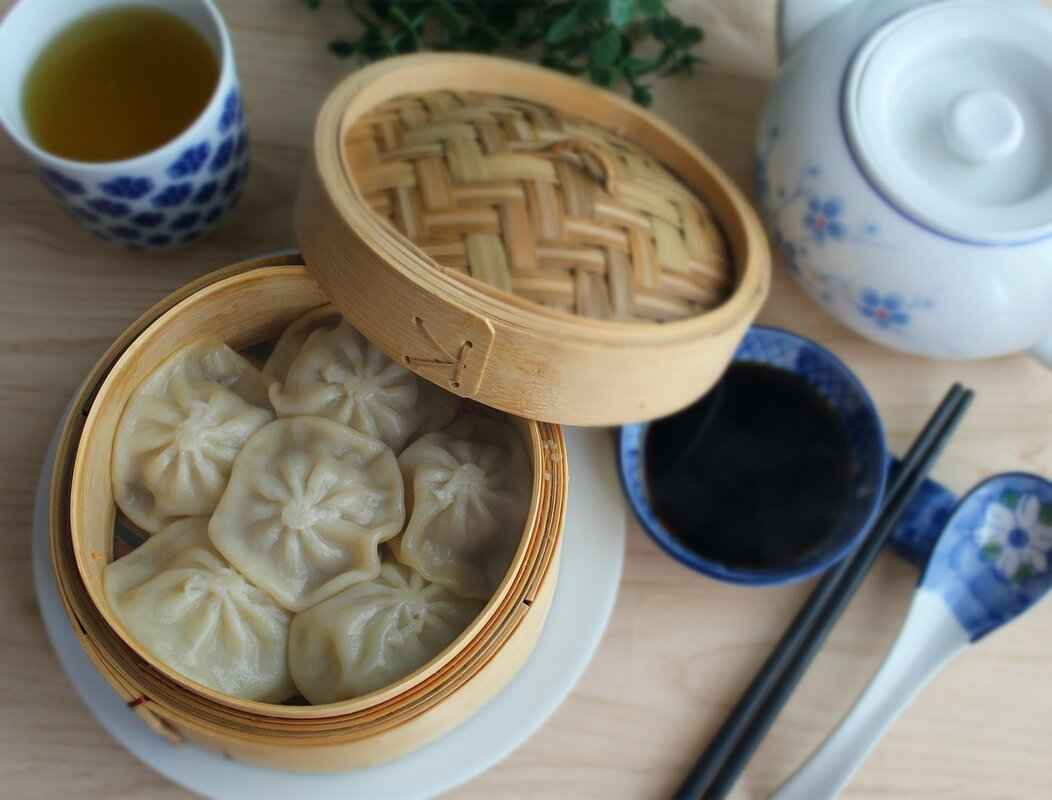
Popular Low-Calorie Asian Ingredients
When it comes to low-calorie Asian cooking, the choice of ingredients plays a crucial role in both flavor and nutrition. Many traditional Asian ingredients are not only low in calories but also packed with essential nutrients, making them ideal for anyone looking to maintain a healthy lifestyle. Below, we will explore some of the most popular low-calorie ingredients used in Asian cuisine that can enhance your meals.
- Vegetables: Asian cuisine is renowned for its vibrant and diverse vegetables. Ingredients like bok choy, spinach, and broccoli are not only low in calories but also rich in vitamins and minerals.
- Herbs and Spices: Fresh herbs such as cilantro and basil, along with spices like ginger and garlic, add depth and flavor without extra calories.
- Lean Proteins: Options like tofu, chicken breast, and fish provide essential protein while keeping calorie counts low.
- Whole Grains: Instead of refined grains, consider using brown rice or quinoa for a healthier carbohydrate source that offers more fiber and nutrients.
- Noodles: Look for zucchini noodles or shirataki noodles as lower-calorie alternatives to traditional wheat noodles.
Each of these ingredients not only contributes to a healthier meal but also elevates the overall flavor profile of dishes. For instance, leafy greens provide a refreshing crunch, while spices can transform a simple dish into a culinary delight.
Indeed, the way you cook these ingredients can significantly impact their health benefits. Techniques such as steaming, stir-frying, and grilling help retain nutrients while minimizing the need for excess oil or sugar. For example, steaming vegetables preserves their vitamins, making them a more nutritious choice.
Incorporating these low-calorie ingredients into your meals is easier than you might think. Here are a few practical tips:
- Start your meal with a vegetable-based soup or salad to fill you up with fewer calories.
- Experiment with different herbs and spices to create flavorful marinades for proteins.
- Use whole grains as a base for stir-fries or grain bowls, topped with an array of colorful vegetables.
By focusing on these common ingredients in low-calorie Asian cooking, you can create meals that are not only delicious but also beneficial for your health. Whether you are looking to lose weight or simply eat healthier, these ingredients are a fantastic addition to your culinary repertoire.
Vegetables in Asian Cuisine
Asian cuisine is renowned for its rich flavors and vibrant colors, largely attributed to the diverse range of vegetables used in its dishes. These vegetables not only enhance the taste and appearance of meals but also provide essential vitamins and minerals while keeping calorie counts low. In this section, we will delve into the various types of vegetables commonly found in Asian cooking and their health benefits.
Asian dishes incorporate a wide variety of vegetables, each contributing unique flavors and nutritional benefits. Here are some of the most popular categories:
- Leafy Greens: These are staples in many Asian cuisines. Vegetables such as bok choy, spinach, and Chinese cabbage are not only low in calories but also high in vitamins A, C, and K.
- Cruciferous Vegetables: Varieties like broccoli, cauliflower, and Chinese broccoli are packed with fiber and antioxidants, making them excellent additions to stir-fries and soups.
- Root Vegetables: Ingredients such as carrots, daikon radish, and sweet potatoes are often used in stews and curries, providing natural sweetness and a satisfying texture.
- Legumes: Beans and peas, including mung beans and edamame, are rich in protein and fiber, making them ideal for adding heartiness to dishes without excessive calories.
Incorporating a variety of vegetables into your meals can significantly enhance your overall health. Here are some key benefits:
- Low-Calorie Options: Most vegetables are low in calories, allowing for larger portions without the risk of weight gain.
- Nutrient Density: Vegetables are rich in essential nutrients, providing the body with the vitamins and minerals it needs for optimal functioning.
- Fiber Content: Many vegetables are high in fiber, which aids in digestion and helps maintain a healthy weight by promoting a feeling of fullness.
- Antioxidant Properties: Vegetables such as bell peppers and spinach are loaded with antioxidants that combat oxidative stress and inflammation.
Preparation methods can greatly affect the nutrient retention and flavor of vegetables. Here are some popular techniques:
- Stir-Frying: A quick cooking method that retains the crunch and nutrients of vegetables. Use minimal oil and high heat for best results.
- Steaming: This method preserves the vitamins and minerals in vegetables, making it a healthy choice for cooking.
- Raw Salads: Incorporating raw vegetables into salads not only adds crunch but also maximizes their nutrient content.
In summary, the diverse range of vegetables used in Asian cuisine plays a crucial role in promoting a healthy lifestyle. By choosing a variety of these nutrient-dense options, you can enjoy delicious meals that are both satisfying and beneficial for your health.
Leafy Greens and Cruciferous Vegetables
Leafy greens and cruciferous vegetables are essential components of a healthy diet, particularly in Asian cuisine. These nutrient-dense foods not only enhance the flavor of meals but also provide a multitude of health benefits. Incorporating vegetables like bok choy and broccoli into your daily meals can significantly boost your nutrient intake while keeping calorie counts low.
Leafy greens, such as spinach, kale, and collard greens, are packed with vitamins A, C, and K, along with essential minerals like calcium and iron. These nutrients support various bodily functions, including immune health, bone strength, and blood clotting. Additionally, leafy greens are high in fiber, which aids in digestion and promotes a feeling of fullness, making them an excellent choice for weight management.
Cruciferous vegetables, on the other hand, include options like cauliflower, cabbage, and Brussels sprouts. These vegetables are renowned for their cancer-fighting properties, thanks to compounds called glucosinolates. Research has shown that regular consumption of cruciferous vegetables may lower the risk of certain cancers, particularly those affecting the digestive system. Furthermore, they are low in calories and high in fiber, making them a perfect addition to any low-calorie meal plan.
- Versatility in Cooking: Both leafy greens and cruciferous vegetables can be easily incorporated into a variety of dishes. From stir-fries and soups to salads and wraps, these vegetables can be prepared in numerous ways to suit your taste preferences.
- Quick Preparation: They can be quickly sautéed, steamed, or even eaten raw, making them convenient for busy lifestyles.
- Flavor Enhancement: These vegetables absorb flavors well, allowing them to complement other ingredients in your dishes, enhancing overall taste.
When preparing meals, consider adding a base of leafy greens topped with sautéed broccoli and bok choy for a nutrient-packed dish. You can also create a delicious stir-fry by combining these vegetables with lean proteins such as chicken or tofu, flavored with low-sodium soy sauce or ginger for an authentic Asian flair.
In addition to their health benefits, consuming a variety of leafy greens and cruciferous vegetables can help diversify your diet. This variety not only keeps meals interesting but also ensures you receive a broad spectrum of nutrients essential for optimal health.
In conclusion, incorporating leafy greens and cruciferous vegetables into your meals is a simple yet effective way to enhance your overall nutrition. Their versatility, health benefits, and low-calorie content make them ideal choices for anyone looking to maintain a healthy lifestyle. Whether you are preparing a quick lunch or a more elaborate dinner, these vegetables can play a starring role in your culinary creations.
Root Vegetables and Legumes
Root vegetables and legumes are not only essential components of a balanced diet but also play a crucial role in Asian cuisine. These ingredients bring texture and flavor to a variety of dishes while offering significant health benefits. Their inclusion in meals provides a source of fiber and protein without adding excess calories, making them ideal for those seeking to maintain a healthy lifestyle.
Root vegetables such as carrots, radishes, and sweet potatoes are packed with nutrients. They are rich in vitamins A and C, potassium, and antioxidants, which contribute to overall health. Their natural sweetness and earthy flavors enhance the taste of dishes, making them a favorite in stir-fries, soups, and salads. Additionally, their high fiber content aids in digestion and promotes a feeling of fullness, which can assist in weight management.
Legumes, including lentils, chickpeas, and various beans, are another powerhouse ingredient that complements root vegetables beautifully. They are an excellent source of plant-based protein and are low in fat, making them a perfect alternative to meat. Incorporating legumes into meals not only boosts protein intake but also adds texture and substance to dishes. They can be used in curries, salads, and even as a base for soups, enhancing both flavor and nutritional value.
The combination of root vegetables and legumes creates a harmonious balance of flavors and textures. For example, a stir-fry featuring sweet potatoes and chickpeas can offer a satisfying meal that is both nutritious and delicious. This pairing not only provides a variety of vitamins and minerals but also ensures a hearty dish that can keep hunger at bay.
Both root vegetables and legumes are excellent sources of fiber, which is essential for digestive health. A diet rich in fiber can help regulate blood sugar levels, lower cholesterol, and promote a healthy gut. Furthermore, the protein found in legumes is vital for muscle repair and growth, making them an important component of any diet, especially for those who are active.
To enjoy the benefits of root vegetables and legumes, consider incorporating them into your meals regularly. Here are a few simple ideas:
- Stir-fry: Combine your favorite root vegetables with legumes and a light sauce for a quick meal.
- Soups: Add diced root vegetables and legumes to soups for added nutrition and flavor.
- Salads: Toss roasted root vegetables and cooked legumes into salads for a satisfying crunch.
In conclusion, root vegetables and legumes are versatile ingredients that not only enhance the flavor and texture of Asian dishes but also contribute significantly to a healthy diet. Their high fiber and protein content make them ideal for anyone looking to maintain a balanced and nutritious lifestyle. By incorporating these ingredients into your meals, you can enjoy a variety of delicious options while reaping the numerous health benefits they offer.
Grains and Noodles: Healthier Alternatives
When it comes to crafting low-calorie Asian dishes, choosing the right grains and noodles is essential. These ingredients not only provide the necessary carbohydrates but can also enhance the overall nutritional profile of your meals. In this section, we will explore some healthier alternatives to traditional grains and noodles, ensuring you can enjoy your favorite Asian flavors without the extra calories.
Many traditional Asian dishes rely heavily on white rice and refined noodles, which can be high in calories and low in nutrients. However, there are several healthier grain options that can be incorporated into your meals:
- Quinoa: This ancient grain is packed with protein and fiber, making it a great substitute for rice. Quinoa is also gluten-free and offers a nutty flavor that complements various Asian dishes.
- Brown Rice: Unlike white rice, brown rice retains its bran and germ, making it richer in nutrients and fiber. It has a lower glycemic index, which helps in maintaining stable blood sugar levels.
- Farro: This whole grain is chewy and nutty, providing a satisfying texture in salads and stir-fries. Farro is also high in protein and essential nutrients.
Noodles are a staple in many Asian cuisines, but traditional options can be calorie-dense. Here are some healthier noodle alternatives to consider:
- Zucchini Noodles (Zoodles): A fantastic low-calorie substitute, zoodles are made by spiralizing zucchini. They are low in carbohydrates and calories while being high in vitamins.
- Shirataki Noodles: Made from the konjac plant, these noodles are extremely low in calories and carbohydrates. They can absorb flavors well, making them a versatile option in soups and stir-fries.
- Whole Wheat Noodles: Whole wheat noodles contain more fiber and nutrients than their refined counterparts. They can be used in various dishes, from stir-fries to soups, adding a wholesome touch.
Integrating these healthier grains and noodles into your low-calorie Asian dishes is easy. Consider the following tips:
- Substitution: Replace traditional rice or noodles with quinoa or zucchini noodles in your favorite recipes.
- Experiment with Flavors: Use sauces and spices to enhance the taste of these alternatives, ensuring they complement the dish.
- Balance Your Plate: Combine grains and vegetables to create a balanced meal that is both filling and nutritious.
By making these simple adjustments, you can enjoy the essence of Asian cuisine while maintaining a healthy lifestyle. These alternatives not only reduce calorie intake but also provide essential nutrients that contribute to overall well-being.
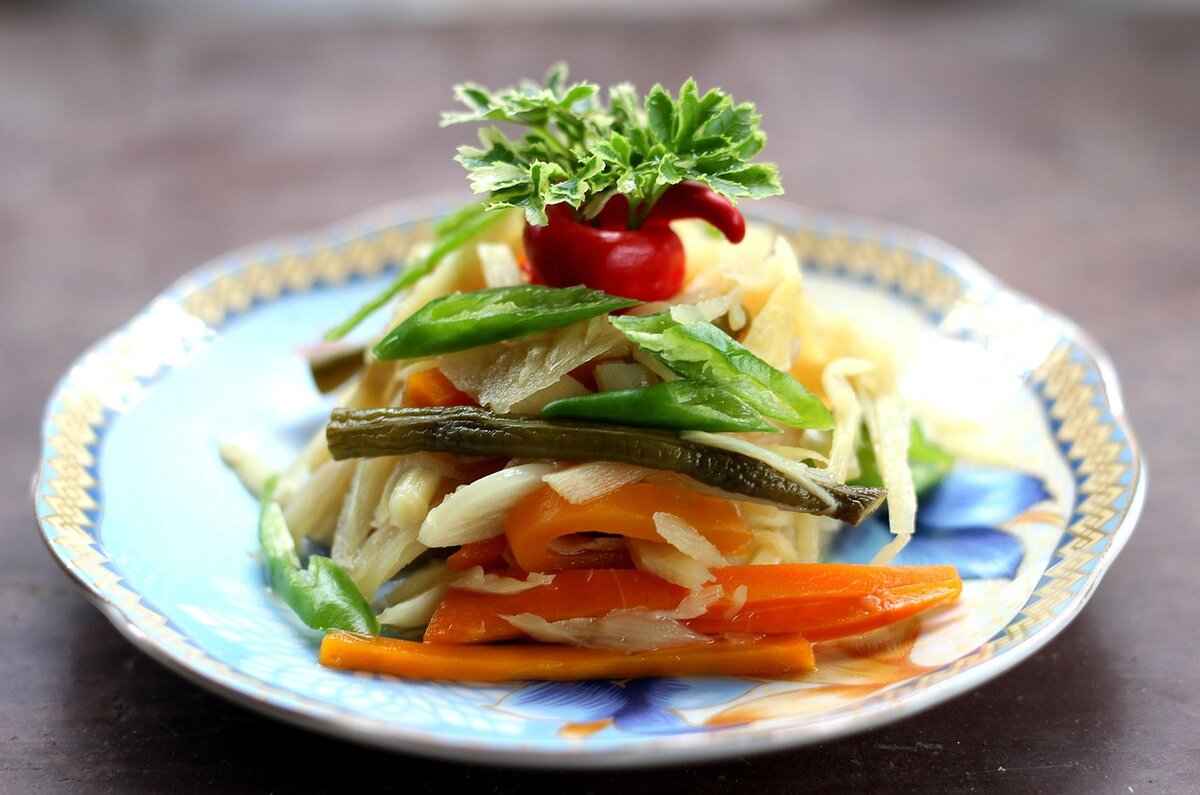
Delicious Low-Calorie Asian Recipes
This section presents a selection of easy-to-make low-calorie Asian recipes that are both flavorful and nutritious, perfect for any meal. These dishes not only satisfy your taste buds but also align with a healthy lifestyle. Let’s dive into some delightful recipes that are simple to prepare and packed with vibrant flavors.
Low-calorie Asian recipes often utilize fresh ingredients, lean proteins, and cooking methods that minimize added fats. By focusing on vegetables, whole grains, and lean meats, these recipes offer satisfying meals without the extra calories.
- Vegetable Stir-Fry: A quick and colorful dish made with seasonal vegetables such as bell peppers, broccoli, and snap peas. Use a splash of soy sauce and a sprinkle of sesame seeds for added flavor.
- Shrimp and Broccoli: This dish combines shrimp, which is low in calories and high in protein, with steamed broccoli. Season with garlic and ginger for a zesty kick.
- Asian Cucumber Salad: A refreshing salad made with sliced cucumbers, rice vinegar, and a hint of chili oil. This dish is perfect as a side or a light meal.
- Tofu and Vegetable Soup: A warming soup featuring silken tofu, mushrooms, and spinach in a light broth. It’s not only low in calories but also rich in protein and nutrients.
- Brown Rice Sushi Rolls: Create your own sushi rolls using brown rice, filled with avocado, cucumber, and crab or tofu. These rolls are nutritious and make for a fun meal prep activity.
When preparing these recipes, consider the following tips to keep them low-calorie:
- Use Less Oil: Opt for non-stick pans to reduce the amount of oil needed for cooking.
- Incorporate More Vegetables: Increase the volume of vegetables in your dishes to add fiber and nutrients without significantly increasing calories.
- Choose Whole Grains: Substitute white rice with brown rice or quinoa for added fiber and a lower glycemic index.
If you’re looking for more inspiration, numerous online resources offer a wealth of low-calorie Asian recipes. Websites like AllRecipes and EatingWell provide user-friendly recipes that cater to various dietary needs. Additionally, many food blogs focus on healthy Asian cuisine, offering innovative twists on traditional dishes.
Incorporating these low-calorie Asian recipes into your meal planning can enhance your diet while keeping your meals exciting and satisfying. With a little creativity, you can enjoy delicious flavors without compromising your health goals.
Light Stir-Fry Recipes
are not only quick and easy to prepare but also a fantastic way to incorporate a variety of nutritious ingredients into your meals. This cooking method allows you to retain the vibrant colors and essential nutrients of vegetables while delivering delicious flavors. Here, we explore some delightful light stir-fry recipes that feature lean proteins and an array of colorful vegetables.
Stir-frying is an incredibly efficient cooking technique that typically involves cooking food over high heat for a short period. This method minimizes the time food spends in the cooking process, which helps to preserve vitamins and minerals that can be lost during longer cooking times. Additionally, stir-frying requires less oil than traditional frying, making it a healthier option.
- Lean Proteins: Chicken breast, shrimp, tofu, and lean cuts of beef are excellent choices that provide high-quality protein without excess fat.
- Colorful Vegetables: Bell peppers, broccoli, snap peas, and carrots not only add flavor but also bring a wealth of vitamins and antioxidants to your dish.
- Flavor Enhancers: Ingredients like garlic, ginger, and low-sodium soy sauce can elevate the taste without adding unnecessary calories.
Ingredients:- 1 lb chicken breast, sliced- 2 cups mixed bell peppers, sliced- 1 cup broccoli florets- 2 cloves garlic, minced- 2 tbsp low-sodium soy sauce- 1 tbsp olive oilInstructions:1. Heat olive oil in a large skillet over medium-high heat.2. Add garlic and sauté for 30 seconds.3. Add chicken and cook until browned.4. Add vegetables and soy sauce; stir-fry for 5-7 minutes until vegetables are tender-crisp.
Ingredients:- 1 lb shrimp, peeled and deveined- 2 cups snap peas- 1 red bell pepper, sliced- 1 tbsp ginger, grated- 2 tbsp sesame oil- 1 tbsp low-sodium soy sauceInstructions:1. In a pan, heat sesame oil over medium heat.2. Add ginger and sauté for 1 minute.3. Add shrimp and cook until pink.4. Toss in snap peas and bell pepper; stir-fry for 3-4 minutes.5. Drizzle with soy sauce before serving.
Ingredients:- 1 block firm tofu, cubed- 2 cups broccoli florets- 1 cup carrots, sliced- 2 cloves garlic, minced- 2 tbsp low-sodium soy sauce- 1 tbsp olive oilInstructions:1. Heat olive oil in a skillet over medium-high heat.2. Add garlic and sauté for 30 seconds.3. Add tofu and cook until golden brown.4. Stir in broccoli and carrots; add soy sauce and stir-fry for 5 minutes.
To achieve the best results with your stir-fry, consider the following tips:
- Prep Ingredients Ahead: Chop vegetables and proteins in advance to streamline the cooking process.
- Use High Heat: Cooking over high heat allows for quick cooking while maintaining the texture and color of your ingredients.
- Don’t Overcrowd the Pan: Cook in batches if necessary to ensure even cooking and proper browning.
Incorporating light stir-fry recipes into your weekly meal plan can be an enjoyable way to maintain a healthy lifestyle. With endless combinations of ingredients, you can create satisfying meals that are both nutritious and delicious.
Refreshing Asian Salads
In the realm of healthy eating, stand out as a vibrant and delicious option. These salads not only tantalize the taste buds but also incorporate a variety of fresh ingredients that are both nutritious and satisfying. By blending traditional Asian flavors with crisp vegetables, these salads offer a light meal that is perfect for any occasion.
Asian salads are characterized by their crunchy textures and bold flavors. They often feature a mix of fresh vegetables, herbs, and unique dressings that elevate the dish. Ingredients like cucumbers, carrots, and radishes not only add color but also provide essential vitamins. The use of ingredients such as sesame oil, rice vinegar, and soy sauce in dressings enhances the flavor profile while keeping the dish light.
- Leafy Greens: Varieties such as spinach, arugula, and bok choy serve as a nutritious base.
- Fresh Vegetables: Crisp vegetables like bell peppers, cabbage, and snap peas are commonly used.
- Proteins: Options like grilled chicken, tofu, or shrimp can be added for a satisfying meal.
- Herbs: Fresh herbs such as cilantro and mint enhance flavor and freshness.
Here are a few popular recipes that showcase the delightful flavors of Asian salads:
1. Thai Mango Salad: Combine julienned mango, carrots, and bell peppers with a lime and fish sauce dressing.2. Korean Cucumber Salad: Toss sliced cucumbers with sesame oil, garlic, and chili flakes for a spicy kick.3. Vietnamese Noodle Salad: Mix rice noodles with fresh herbs, vegetables, and a tangy dressing made from lime juice and soy sauce.
To create a refreshing Asian salad that bursts with flavor, consider the following tips:
- Balance Flavors: Aim for a mix of sweet, salty, and tangy flavors by using a variety of dressings.
- Texture Variety: Incorporate different textures by adding crunchy nuts or seeds, such as peanuts or sesame seeds.
- Chill Ingredients: Serve the salad chilled for a refreshing experience, especially on hot days.
Incorporating Asian salads into your diet offers numerous health benefits. They are typically low in calories yet high in fiber, which aids in digestion and promotes a feeling of fullness. The variety of vegetables provides essential vitamins and minerals, while the inclusion of lean proteins helps maintain muscle mass.
In summary, refreshing Asian salads are a delightful way to enjoy a healthy meal. By utilizing fresh ingredients and bold flavors, these salads can be both satisfying and nutritious. Whether as a side dish or a main course, they are sure to please your palate while supporting a healthy lifestyle.
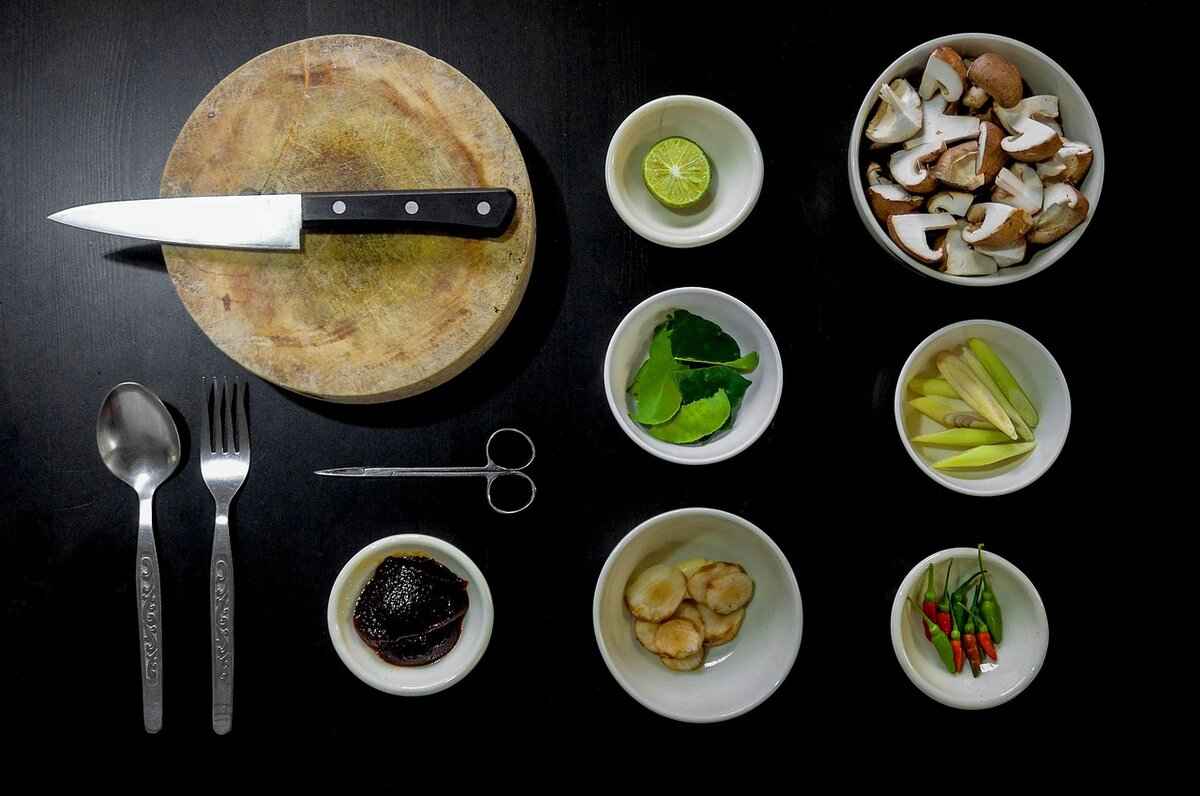
How to Make Asian Dishes Healthier
Incorporating healthier practices into traditional Asian cooking can significantly enhance the nutritional value of your meals without compromising on taste. Here are some practical tips to modify your favorite recipes while preserving their authentic flavors and textures.
- Reduce Oil Usage: Traditional Asian recipes often call for substantial amounts of oil for stir-frying or deep-frying. Consider using non-stick pans or cooking methods like steaming or baking. You can also substitute part of the oil with broth or water to achieve similar results with fewer calories.
- Opt for Lean Proteins: Instead of fatty cuts of meat, choose lean proteins such as chicken breast, tofu, or seafood. These options not only lower calorie counts but also provide essential nutrients and maintain the dish’s integrity.
- Increase Vegetables: Adding more vegetables not only enhances the flavor but also boosts the fiber content, making the dish more satisfying. Incorporate a variety of colorful vegetables like bell peppers, broccoli, and snap peas to create a visually appealing and nutritious meal.
- Use Whole Grains: Swap refined grains like white rice or noodles for whole grains such as brown rice, quinoa, or whole wheat noodles. These alternatives offer more fiber and nutrients, promoting a healthier diet.
- Limit Sugar: Many Asian dishes contain added sugars, especially in sauces. Opt for natural sweeteners like honey or reduce the amount of sugar used. You can also experiment with spices to add depth of flavor without the extra calories.
Portion Control and Serving Suggestions
Portion control is vital when it comes to maintaining a healthy diet. Consider serving smaller portions of high-calorie items and filling your plate with lower-calorie options like salads or steamed vegetables. This approach allows you to enjoy the flavors of your favorite dishes while keeping calorie intake in check.
Experiment with Flavor Enhancers: Instead of relying on calorie-dense sauces, explore flavor enhancers like fresh herbs, citrus juices, or spices. Ingredients such as ginger, garlic, and cilantro can elevate the taste of your dishes without adding unnecessary calories.
Mindful Eating: Finally, practice mindful eating by savoring each bite and paying attention to your hunger cues. This technique can help you enjoy your meals more and reduce the tendency to overeat.
By following these simple yet effective strategies, you can enjoy delicious Asian dishes that are not only authentic but also aligned with a healthier lifestyle. Remember, the key is to make small adjustments that can lead to significant health benefits over time.
Reducing Oil and Sugar
In today’s health-conscious world, many individuals are seeking ways to enjoy their favorite dishes while also prioritizing their well-being. One effective strategy to achieve this is by in recipes. This approach not only promotes a healthier lifestyle but also allows for the creation of flavorful meals that do not compromise on taste.
Reducing oil and sugar in your cooking can lead to numerous health benefits. Excessive oil consumption can contribute to weight gain and heart disease, while high sugar intake is linked to diabetes and other metabolic disorders. By cutting back on these ingredients, you can create meals that are lower in calories and better for your overall health.
- Use Cooking Sprays: Instead of pouring oil into your pan, consider using a non-stick cooking spray. This method provides a light coating without the added calories.
- Opt for Broth or Water: When sautéing vegetables, use vegetable broth or water instead of oil. This not only reduces fat but also adds flavor.
- Roast or Grill: These cooking methods require less oil compared to frying, allowing you to enjoy crispy textures without the added fat.
- Use Natural Sweeteners: Replace refined sugar with natural alternatives like honey, maple syrup, or agave nectar. These options can provide sweetness with fewer health risks.
- Enhance Flavor with Spices: Instead of reaching for sugar, try using spices like cinnamon or vanilla extract to enhance the taste of your dishes.
- Gradual Reduction: If you’re used to sweet flavors, gradually reduce the amount of sugar in your recipes. Your palate will adjust over time, making less sugar more palatable.
To ensure that your dishes remain delicious while cutting back on oil and sugar, consider combining techniques. For instance, when preparing a stir-fry, use a blend of spices and herbs to enhance the flavor profile. Incorporating fresh ingredients like garlic, ginger, and citrus can add depth without the need for excess oil or sugar.
Moreover, experimenting with different cooking methods can yield satisfying results. Try steaming vegetables instead of sautéing them in oil, or create marinades using citrus juices and herbs to infuse flavor into proteins without relying on sugary sauces.
By implementing these strategies, you can enjoy a wide range of dishes that are both nutritious and flavorful. Remember, the goal is not to eliminate oil and sugar entirely but to find a balance that works for your lifestyle. With creativity and experimentation, it is entirely possible to create meals that satisfy your taste buds while supporting your health goals.
In conclusion, reducing oil and sugar in your cooking is a practical approach to achieving a healthier diet. By utilizing various techniques and being mindful of ingredient choices, you can enjoy delicious meals that align with your health objectives.
Portion Control and Serving Suggestions
Maintaining a balanced diet is crucial for overall health and well-being. One of the key components to achieving this is portion control. Understanding the importance of portion sizes can help you enjoy your favorite foods while avoiding excess calories. This section will delve into the significance of portion control and provide practical serving suggestions to help you maintain a healthy lifestyle.
Portion control is essential for several reasons:
- It helps prevent overeating, which can lead to weight gain.
- It encourages mindful eating, allowing you to savor each bite.
- Proper portion sizes can improve digestion and overall health.
- It aids in managing blood sugar levels, especially for those with diabetes.
Determining the right portion size can be challenging, but there are several strategies to help:
- Use Smaller Plates: Utilizing smaller dishes can create the illusion of a full plate while actually serving less food.
- Measure Your Food: Initially measuring your servings can help you become familiar with appropriate portion sizes.
- Follow Serving Suggestions: Pay attention to the serving sizes indicated on food labels, which can guide your portions.
- Listen to Your Body: Eat slowly and pay attention to your hunger cues, stopping when you feel satisfied rather than full.
Here are some practical serving suggestions to help you maintain a balanced diet:
| Food Group | Recommended Portion Size |
|---|---|
| Grains (e.g., rice, quinoa) | 1/2 cup cooked |
| Protein (e.g., chicken, tofu) | 3-4 ounces |
| Vegetables | 1 cup raw or 1/2 cup cooked |
| Fruits | 1 medium fruit or 1/2 cup chopped |
| Fats (e.g., oils, nuts) | 1 tablespoon or a small handful |
Incorporating mindful eating techniques can enhance your portion control efforts:
- Eat Without Distractions: Avoid watching TV or using your phone while eating to focus on your meal.
- Chew Thoroughly: Taking the time to chew your food well can improve digestion and help you recognize when you’re full.
- Be Aware of Emotional Eating: Identify triggers that lead to emotional eating and find healthier coping mechanisms.
By understanding the importance of portion control and implementing these serving suggestions, you can enjoy a wide variety of foods while maintaining a balanced diet. Remember, it’s not just about what you eat, but also how much you eat that contributes to your overall health.

Where to Find Low-Calorie Asian Dishes
When it comes to maintaining a healthy lifestyle, finding low-calorie Asian dishes can be a delightful journey. With a plethora of flavors and ingredients, Asian cuisine offers numerous options that are both nutritious and satisfying. In this section, we will explore where to find these delicious meals, whether at local restaurants or through online resources.
Discovering local restaurants that specialize in low-calorie Asian dishes can be an exciting adventure. Many eateries are now prioritizing health-conscious menus, making it easier to enjoy your favorite flavors without the guilt. Here are some ways to find these culinary gems:
- Health-Conscious Asian Restaurants: Look for restaurants that specifically advertise healthy or low-calorie options. These establishments often focus on using fresh ingredients, lean proteins, and cooking methods that reduce calorie counts, such as steaming or grilling.
- Farm-to-Table Asian Eateries: Many modern Asian restaurants emphasize sourcing local and organic ingredients. This not only enhances the flavor but also ensures that the dishes are made with high-quality, nutritious components.
- Asian Fusion Restaurants: Some fusion restaurants creatively blend traditional Asian dishes with healthier twists. They may offer lower-calorie alternatives to classic favorites, allowing you to enjoy familiar tastes with fewer calories.
If dining out isn’t an option, there are numerous online resources that can help you whip up low-calorie Asian dishes at home. Here are some valuable platforms:
- Recipe Blogs: Many food bloggers specialize in low-calorie Asian cuisine, providing detailed recipes and cooking tips. Websites like SkinnyTaste and Love and Lemons often feature healthy Asian recipes that are easy to follow.
- YouTube Channels: Video tutorials can be incredibly helpful. Channels dedicated to healthy cooking often showcase low-calorie Asian recipes, guiding you step-by-step through the cooking process.
- Social Media Platforms: Platforms like Instagram and Pinterest are treasure troves for discovering new recipes. Search for hashtags like #LowCalorieAsian or #HealthyAsianRecipes to find inspiration from home cooks and chefs alike.
In addition to websites and blogs, there are several mobile apps designed to help you find healthy recipes and track your meals:
- MyFitnessPal: This app not only helps you track your calories but also includes a database of recipes, including low-calorie Asian dishes.
- Yummly: Yummly allows you to search for recipes based on dietary preferences, including low-calorie options. You can filter results to find Asian-inspired dishes that suit your taste.
By utilizing these resources, you can easily access a variety of low-calorie Asian dishes, ensuring that you maintain a healthy diet while enjoying the rich flavors of Asian cuisine. Whether you choose to dine out or cook at home, the options are abundant and delicious.
Health-Conscious Asian Restaurants
When it comes to dining out, making healthy choices can often feel challenging, especially in the realm of Asian cuisine, which is renowned for its rich flavors and diverse ingredients. However, a growing number of are emerging, prioritizing low-calorie options that do not compromise on taste or nutrition. This article will guide you through some of the best places to find these nutritious meals, ensuring you can enjoy delicious dishes while maintaining a healthy lifestyle.
Dining at health-conscious Asian restaurants provides several benefits. Firstly, these establishments focus on using fresh, high-quality ingredients, which often means less processed food and more nutrient-rich options. Secondly, they typically offer a variety of low-calorie dishes that cater to different dietary needs, making it easier for diners to make informed choices.
- Menu Transparency: Restaurants that provide detailed nutritional information about their dishes help diners make informed choices.
- Fresh Ingredients: Look for places that emphasize seasonal and local produce, which often results in healthier, tastier dishes.
- Cooking Techniques: Health-focused restaurants often utilize healthier cooking methods such as steaming, grilling, or stir-frying with minimal oil.
Here are some notable restaurants that excel in providing low-calorie Asian dishes:
- Green Bamboo: Known for its fresh ingredients and a variety of vegetarian options, Green Bamboo offers dishes like Vietnamese spring rolls and tofu pho that are both satisfying and healthy.
- Wok This Way: This modern eatery specializes in customizable stir-fries, allowing diners to choose lean proteins and an array of colorful vegetables, all cooked with minimal oil.
- Zen Sushi: Zen Sushi not only serves traditional sushi but also offers a range of low-calorie options such as sashimi and seaweed salads, making it a great choice for health-conscious diners.
When exploring menus at Asian restaurants, look for keywords such as steamed, grilled, or lightly fried. These terms often indicate healthier preparation methods. Additionally, dishes that emphasize fresh vegetables and lean proteins are usually lower in calories.
In addition to visiting local restaurants, many online platforms can help you discover health-conscious Asian cuisine. Websites and apps like Yelp and TripAdvisor allow users to filter restaurants based on dietary preferences. Moreover, numerous blogs and social media accounts focus on healthy Asian recipes, providing inspiration for home cooking.
By seeking out health-conscious Asian restaurants, you can enjoy a variety of delicious meals that align with your nutritional goals. Whether you’re dining out or cooking at home, the options are plentiful, ensuring that you never have to sacrifice flavor for health.
Online Recipe Resources
In today’s digital age, discovering low-calorie Asian recipes has never been easier. With a plethora of online platforms and recipe blogs dedicated to healthy cooking, you can find countless ideas that cater to your dietary needs. These resources not only provide recipes but also offer cooking tips, nutritional information, and community support for those looking to maintain a healthy lifestyle.
Online recipe resources are invaluable for anyone interested in low-calorie Asian cuisine. They allow you to:
- Access a Variety of Recipes: From stir-fries to salads, the options are endless.
- Learn New Cooking Techniques: Many blogs and websites provide instructional videos and step-by-step guides.
- Customize Recipes: You can find inspiration to modify traditional recipes to fit your dietary preferences.
Here are some popular platforms where you can explore low-calorie Asian dishes:
- Food Network: This site features a dedicated section for healthy recipes, including Asian-inspired dishes.
- AllRecipes: Users share their low-calorie Asian recipes, complete with reviews and tips.
- Minimalist Baker: Focused on simple, healthy recipes, this blog often includes Asian flavors.
- BBC Good Food: Offers a variety of low-calorie recipes, including Asian cuisine, with nutritional breakdowns.
In addition to mainstream platforms, several blogs specialize in low-calorie Asian cooking:
- Healthy Nibbles and Bits: This blog focuses on healthy, Asian-inspired recipes that are easy to prepare.
- Rasa Malaysia: Known for its authentic Asian recipes, it also features healthier versions of traditional dishes.
- Pickled Plum: Offers a wide range of Asian recipes, many of which are low in calories and rich in flavor.
Social media platforms like Instagram and Pinterest are excellent for finding low-calorie Asian recipes. You can:
- Follow Influencers: Many food bloggers share their healthy recipes and cooking tips on these platforms.
- Join Cooking Groups: Engage with communities focused on healthy eating, where members share their favorite low-calorie dishes.
- Save and Organize Recipes: Use features like Pinterest boards to curate your favorite low-calorie Asian recipes.
When searching for recipes, consider the following:
- Check Nutritional Information: Look for recipes that provide calorie counts and nutritional breakdowns.
- Read Reviews: User feedback can give you insights into the recipe’s taste and ease of preparation.
- Experiment with Ingredients: Don’t hesitate to swap high-calorie ingredients for healthier alternatives.
By exploring these online resources, you can discover a wealth of low-calorie Asian recipes that not only satisfy your taste buds but also support your health goals. With just a few clicks, you can transform your cooking habits and enjoy delicious meals that align with your lifestyle.
Frequently Asked Questions
- What are some popular low-calorie Asian dishes?
Some popular low-calorie Asian dishes include vegetable stir-fries, miso soup, and fresh spring rolls. These dishes are not only delicious but also packed with nutrients!
- How can I make traditional Asian recipes healthier?
You can make traditional Asian recipes healthier by reducing oil and sugar, using lean proteins, and incorporating more vegetables. Simple swaps can keep the flavors intact while cutting down on calories!
- Are there specific ingredients to look for in low-calorie Asian cooking?
Absolutely! Look for ingredients like leafy greens, cruciferous vegetables, and whole grains. These not only enhance the flavor but also contribute to a healthier meal.
- Where can I find low-calorie Asian dishes?
You can find low-calorie Asian dishes at health-conscious restaurants or by exploring online recipe resources. Many places now cater to healthier eating without sacrificing taste!
- What are some serving suggestions for low-calorie Asian meals?
For serving suggestions, consider using smaller plates to help with portion control, and pair your meals with a side of fresh salad or steamed vegetables for a balanced diet.

